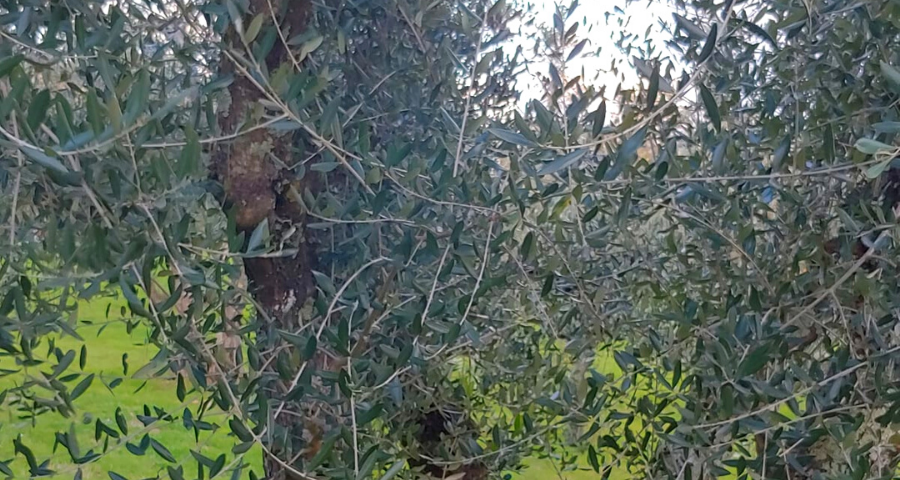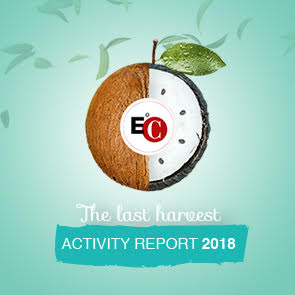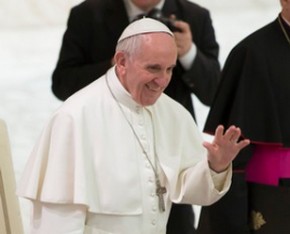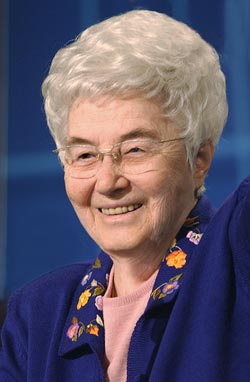The Market and the Temple/8 - Analysis - A story where the Medici and other magnificent Florentines, St. Antonino, the common good and the Magi are the protagonists.
By Luigino Bruni
Published in Avvenire 27/12/2020
In the fourteenth-fifteenth century, the world quickly went from the common good to the good of the cities or municipalities: the Church justified the action of the new men of the market if it benefited the city.
Throughout history, the pacts formed between wealth and religion have always been complicated matters, with outcomes that often turn out to be very different from the initial intentions of their protagonists. The city of Florence of the fourteenth-fifteenth century was the stage for one of these replacements, where a game that would end up being decisive for modern economic ethics was played out. Its protagonists were the Medici, St. Antonino Pierozzi (1389-1459), the category of the common good and the Magi. Let us start with the common good. This fundamental theological category undergoes a profound semantic and practical switch between the fourteenth and fifteenth centuries. In the matter of the condemnation of profit, the reasons put forth by the common good won out over the theological reasons presented against profit. This theology of the common good began to spread and increasingly became the new theology of the new cities. A common good that became more and more concrete, deeply linked to the other great category of community, so much so that the transition from the common good to the good of the community or municipality happened very fast. Almost every economic action of the new men of the market ended up being justified by the Church if it benefited the common good of the city. And since in those centuries the common good and that of the community were, in fact, that of the great merchant-bankers, the common good ended up being made to coincide with that of the merchant's guilds.
St. Antonino, a Dominican, bishop, theologian and "economist", was well aware, as a pastor and expert in the accompaniment of lay people, that there is great complexity in these economic and financial matters. And thus, speaking of "forward" sales, he concluded: «However this is a very complicated and not very clear subject, which is why it should not be further explored» ("Summa theologica"). It should not be explored: it is in fact this "complication" that highlights something that by now has changed in Florence and in the new commercial cities. The birth of free Municipalities and cities, the affirmation of this new class of merchants, with their special laws and courts, were profoundly changing the relationship between theological principles and economic practice. The Scriptures and their condemnation of usury were always the same, and the distrust of the Fathers of the Church towards businesses and traders still remained an essential and unchanged teaching. But the emergence of a new and increasingly complex economic reality made ancient Scripture and theology unsuitable for disciplining and ruling in the many concrete cases of business that were appearing, which - and this is in fact the point - were doing so much good to the city and to the Church. The reality was superior to the idea. The "civil merchant" became the image of the negotium (business) that overcomes the otium (leisure) and denies it (nec-otium, the non-existence of leisure).
Hence, we are facing an authentic ethical, theological, social and economic revolution here. The theology of ecclesiastics thus gradually begins to move away from the economic sphere, which has become too complex, and increasingly specializes in the personal and family sphere and in the life of religious institutions. The merchant is treated as an individual, who in the confessional lists his faults and obtains his penances, more and more easily traded for money through nascent indulgences; but the ethical gaze on public life, which had characterized the first two or three centuries of the second millennium, withdrew and was transformed into generic recommendations entrusted to the Lenten sermons. In the matter of usury, for example, the lawful exceptions were so abstract that they did not allow for any concrete and effective judgments. Almost any interest rate became potentially lawful (for generic loss of profit or emerging damage), especially if the interest was for the benefit of the common good and the good of the municipality (i.e. the city). Thus, in the case of the Florentine public debt, if the Municipality was the entity to issue debt, the legal rate of 5% per year increased to downright usurious rates of up to 10 and even 15%. How? «In order not to incur the censorship of the Church, the Municipality resorted to the ingenious system of the 'Monte dell’un due’' and the 'Monte dell’un tre': where anyone who brought 100 lire to the Monte had 200 or 300 listed in the registers instead» (Armando Sapori,"Houses and shops in Florence in the fourteenth century"/"Case e botteghe a Firenze nel Trecento", 1939). The reason for all this was certainly not the common good, but «the greed for large profits, which has led many astray from trading into usury" (Giovanni e Matteo Villani, "Villani’s Chronicle"/"Cronica" VIII).
The reasons for the common good and the good of the Municipality became so intertwined and central as to justify commercial practices that we cannot even begin to understand today. These include mercantile retaliation. That is, when the merchants of a city suffered acts of violence and damage in foreign territory, mercantile customs allowed retaliation, that is, acts of retaliation by the injured against any merchant of the city where the damage had occurred, regardless of any direct involvement of the interested parties in the episode in question. The common good of the merchant body prevailed over that of its individual members. Furthermore, in order for foreigners to be able to purchase public debt titles in Florence, they had to be granted citizenship first. When in the process of granting this ex privilege citizenship the most used rhetoric was that of friendship and the common good: «No business can exceed the value of friendship with a faithful friend, which is worth more than both gold and silver» (Lorenzo Tanzini," The foreigners and the public debt of Florence in the fifteenth century"/"I forestieri e il debito pubblico").
This alliance between the Church and the merchants in the name of the common good produced an explosion of magnificence. The device for turning wealth into something good and holy shifted its focus from the production to the consumption: what really mattered was not, as in the past, how wealth was generated but how it was used. A rich merchant would be blessed if he spent a good part of his possessions on helping the poor, but even more so if he invested in making the city, its palaces and churches magnificent. Florence was emblematic in all of this, in part thanks to the special friendship that developed between St. Antonino and the Medici family: «There are two virtues of money and its use: liberality and magnificence" (Antonino, "Summa theologica"). The relationship between the Florentine Church and its great merchants represented a perfect mutual benefit: the merchants were freed from a thousand theological snares on usury and profits, and the churches were made magnificent by their enormous wealth, also generated thanks to the liberation from religious bonds. However, even in this phase of affirmation of a new economic ethic, the religious element always remained central. In fact, rather than secularism, we need to speak of a new religiosity. Because the laity and merchants took possession of some religious images and codes. Becoming independent from religion was not enough for them; they wanted religion on their side. It was not enough to be rich and good: they also wanted to be saints.
We have already talked about how the image of Mary Magdalene spread, understood as an icon of the good public use of money by the rich. Another mercantile religious paradigm that was affirmed between the Middle Ages and Modernity is that of the Magi. The Dominican order contributed greatly to the spread of their cult in Europe. The prestigious "Confraternity of the Magi" or "of the Star" (la Compagnia de 'Magi) was already active in Florence towards the end of the 14th century, an association of merchants, of which many philosophers, humanists, writers, artists and various other exponents of the cultural world were also members, perhaps the most important lay congregation in fifteenth century Florence, which had its golden age with St. Antonino and the Medici (Monika Poettinger, "Merchants and Magi"/"Mercanti e Magi"). These rich merchants who, without having to become poor, worshiped Christ with gold and gifts, lent themselves perfectly to the new economic ethic of the city's wealthy class. In many Dominican churches of these centuries there are frescoes representing the Magi, including the Dominican convent of San Marco in Florence, the headquarters of the Confraternity of the Magi, where the spectacular procession of the Magi that was organized on the day of the Epiphany ended. But the "ride of the Magi" was also an essential part of other important city processions, such as the one on the occasion of the feast of St. John, presided over by St. Antonino: «Three magi with a cavalry of more than 200 horses adorned with many magnificent elements» (Matthew Palmieri, "The procession of 1454"). Spectacular!
In 1420 Palla di Noferi Strozzi, the richest merchant-banker in Florence, commissioned a painting of the Magi from Gentile di Fabriano, with Palla himself and his family in the front row of the procession. The Medici did a lot for the Dominicans in Florence, including taking care of the very expensive renovation of the Badia Fiesolana and the convent of San Marco, where Beato Angelico painted an Adoration of the Magi in the cell dedicated to Cosimo. Similar chapels dedicated to the Magi by merchants are also found in other Renaissance cities (in Turin, for example). The role of the Confraternity of the Magi or the Star became so important that, despite the blessing of St. Antonino, it transformed into a sort of new religion. Writing to Lorenzo the Magnificent in 1467 from Rome, Gentile de Becchi assured him that the cardinals of the Pope's college would grant «through your intercession a hundred favours» to anyone who attended the meetings of the Confraternity of the Magi, during which one could also receive the Eucharist by papal dispensation (Rab Hatfield, "The Compagnia de 'Magi"). Marsilio Ficino ("De stella Magorum", 1482), Pico della Mirandola and the neo-Platonists of Florence did the rest, transforming the Magi into icons of a pagan, pre-Christian and esoteric religiosity, on which to found the Renaissance of Europe. It was the end of civil humanism and the beginning of the decadence of Florence and the other Italian cities.
That pact between Church and merchants was the mature fruit of a great seduction of the magnificence that that first "capitalism" exercised on the Church (St. Antonino is one of the first theorists on "capital" related matters). In his Reformation, Luther was struck precisely by this alliance between the Church and merchants, which he considered a deviation from the logic of the Gospel. However, it was precisely the world born out of the Reformation that would, centuries later, give birth to a new capitalism of wealth, which, once again, is using the symbols and vocabulary of the Christian religion. But how did the "merchants" of Florence manage to occupy the 'temple'? We no longer have the ability to understand what the impact of the wealth and immense luxury of the new merchants was on the citizens of Florence. Their wonderful clothes, the new sparkling colours, the impressive processions, palaces and churches such as had never been seen before, were something fantastic, new tales of the "Thousand and One Nights", which seduced and "converted". They were the new heroes, the heirs, even more beautiful than the knights of the Middle Ages, and they enchanted everyone. And Florence was the new promised land, where milk and honey flowed. Merchants conquered the world, converting ancient ethics, above all with beauty and amazement. They did not win everyone over with their florins, but with their magnificence. Will it be, then, a new form of beauty that will save us from this present-day capitalism, where too many Magi have allied themselves with King Herod, telling him where the Child is, thereby becoming accomplices in the many massacres of the innocent? Perhaps, it will be a new beauty, certainly of a very different kind, but still and always beautiful.








